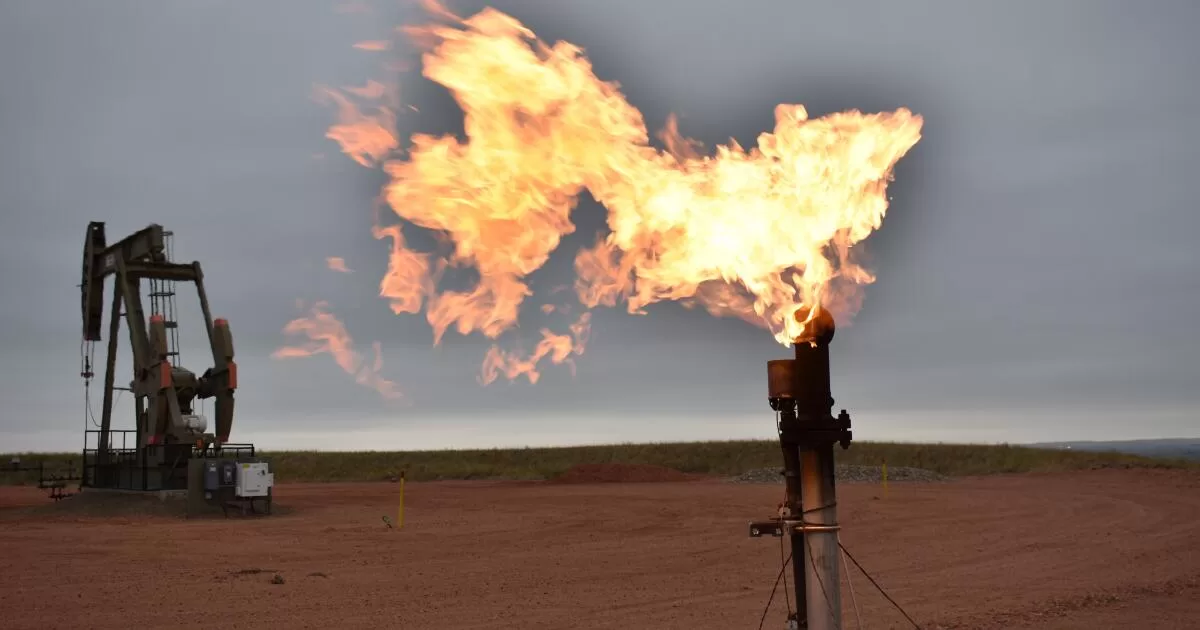The Biden administration announced on Tuesday plans to crack down on emissions of methane, a greenhouse gas many times more potent than carbon dioxide that contributes significantly to global warming.
The announcement came on the president’s last day at the United Nations climate summit in Scotland as world leaders unveiled an international agreement to sharply curtail methane emissions. Brokered by the United States and Europe, the agreement would require countries to cut emissions by a least one-third below 2020 levels by the end of this decade. So far, almost 100 countries have signed the pledge.
The proposed rule could have a major effect on California. Oil production in the state has been declining since the 1980s. Fossil fuel companies, some of which have gone out of business, have left about 35,000 oil and gas wells sitting idle. Many of those wells are unplugged, increasing the risk that they could leak methane gas or cancer-causing chemicals.
In a brief speech on Tuesday, Biden called on countries to “go beyond” the agreed-to reductions and urged more to sign on. “There are more that can join — and should,” he said.
Though they are among the world’s top methane-emitting countries, China, Russia and India have not joined the pledge. Neither Chinese President Xi Jinping nor Russian President Vladimir Putin are attending the conference in person. Both sent envoys.
Ursula von der Leyen, president of the European Commission, also announced Tuesday that European countries would propose new rules to reduce methane emissions, including requirements that oil and gas companies measure and report their emissions and repair methane leaks.
“We cannot wait until 2050; we have to cut emissions fast. And methane is one of the gases we can cut fastest,” she said. If countries fulfill their promises, she said, the additional pollution cuts that often accompany methane emission reductions could prevent 200,000 premature deaths and hundreds of thousands of asthma-related hospital emissions.
The Biden administration’s proposed rule follows weeks of increasing frustration for the White House as Democrats in Congress struggle to bridge differences over climate and social policies. These disagreements have left Biden without a major legislative victory at home as he presses for increased action on climate change internationally.
At the center of the administration’s plans is a new, long-expected rule from the Environmental Protection Agency that would, for the first time, crack down on methane emissions from about a million oil and gas wells across the country.
Some methane emissions occur naturally. But their largest industrial source in the U.S. is the nation’s oil and gas industry. Its main trade group, the American Petroleum Institute, supported the Trump administration’s decision to roll back methane emission rules, though those regulations were later reinstated by Congress.
But even the current regulations apply only to newer wells drilled or modified after 2015, leaving more than 90% of the nation’s wells unregulated. The new rule would expand those regulations so that methane leaks from both old and new sources are covered.
Under the administration’s proposal, the EPA could continue to regulate emissions from new wells. Meanwhile, states would be required to develop their own methane rules for older wells that align with federal guidelines.
Calling the proposed rule a “historic action,” EPA Administrator Michael Regan on Tuesday said it would “ensure robust and lasting cuts in pollution across the country.
“As global leaders convene at this pivotal moment in Glasgow for COP26, it is now abundantly clear that America is back and leading by example in confronting the climate crisis with bold ambition,” Regan said in a statement referring to the U.N. summit. The conference is scheduled to last two weeks, long after Biden and other government leaders return home.
According to the EPA, the new rule, which would be established under the Clean Air Act, would reduce methane emissions by 41 million tons from 2023 to 2035, the equivalent, in terms of environmental harm, of 920 million metric tons of carbon dioxide. That’s more carbon dioxide than was emitted by all American cars and commercial aircraft in 2019.
That level of impact is possible because of methane’s potency. A main component of natural gas, methane is 80 times more effective than carbon dioxide at trapping heat in the atmosphere during the first 20 years after it’s released.
Scientists have estimated that methane is responsible for about one-third of human-caused global warming. They have said that reducing methane leaks — as well as the venting and “flaring,” or burning off, of natural gas from oil wells and refineries — could be one of the fastest ways to slow climate change.
California could face significant challenges in implementing the proposed regulations. An investigation by The Times and the Center for Public Integrity in 2020 found that oil and gas companies haven’t set aside nearly enough money to ensure that these wells are capped and surrounding areas are made safe for nearby residents.
Methane currently accounts for about 10% of California’s greenhouse gas emissions, but that share is growing as carbon dioxide pollution declines. Earlier this year, state officials announced plans to put two satellites into orbit in 2023 to help them track down hard-to-find “super-emitters” of methane and carbon dioxide.
One of those emitters revealed itself last year. The Los Angeles Department of Water and Power disclosed in late 2020 that its power plant had been leaking methane gas for at least three years, angering San Fernando Valley residents.
The Biden administration is also targeting methane emissions through regulations proposed by agencies other than the EPA.
The Transportation Department is preparing to tighten methane regulations governing the nation’s oil and gas pipelines. The Interior Department is working on rules that would limit companies’ ability to burn off natural gas at drill sites on public lands. And the Agriculture Department plans to mitigate global warming by paying farmers to store carbon dioxide through better soil management and other techniques.
